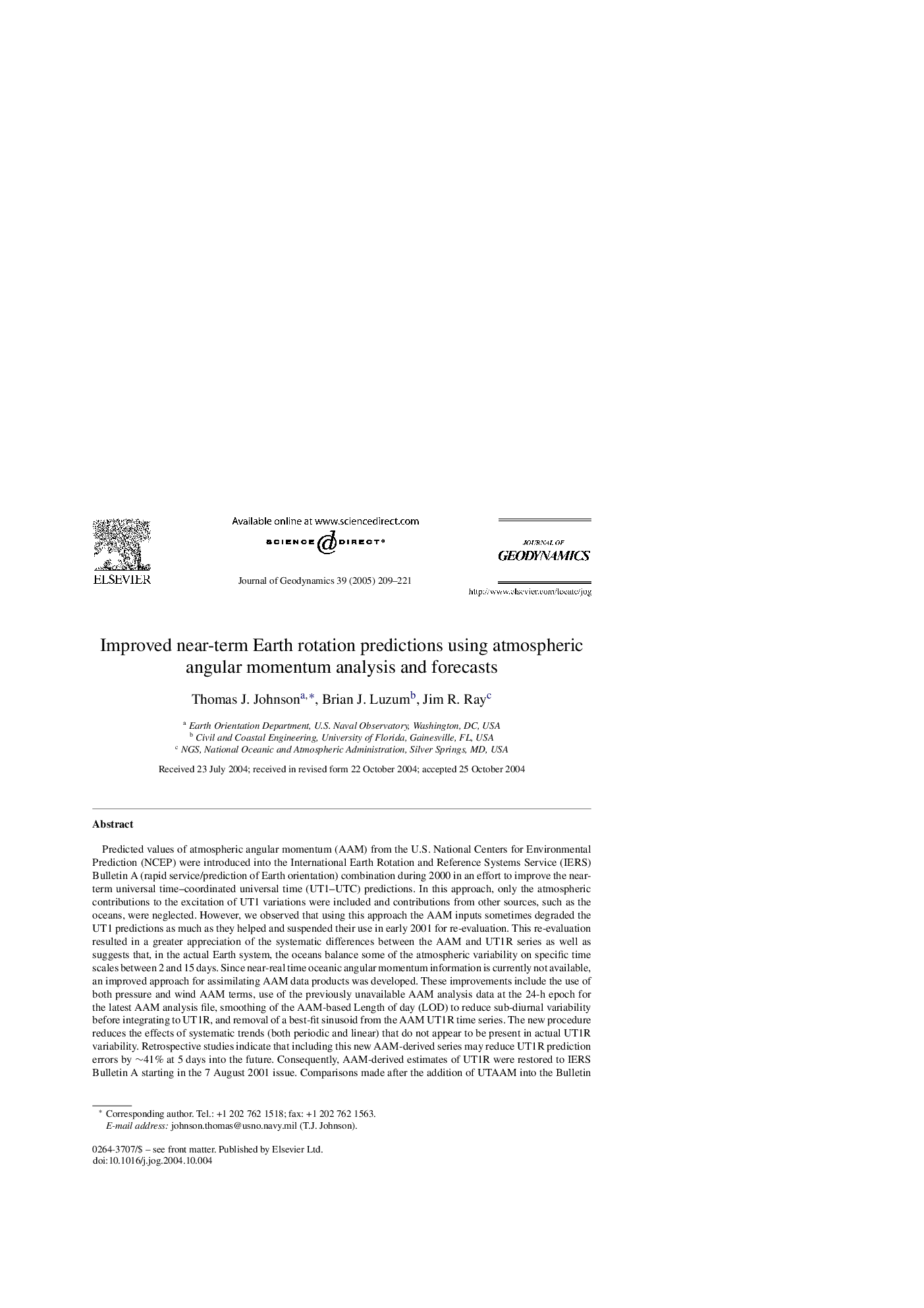| کد مقاله | کد نشریه | سال انتشار | مقاله انگلیسی | نسخه تمام متن |
|---|---|---|---|---|
| 9525901 | 1349902 | 2005 | 13 صفحه PDF | دانلود رایگان |
عنوان انگلیسی مقاله ISI
Improved near-term Earth rotation predictions using atmospheric angular momentum analysis and forecasts
دانلود مقاله + سفارش ترجمه
دانلود مقاله ISI انگلیسی
رایگان برای ایرانیان
کلمات کلیدی
موضوعات مرتبط
مهندسی و علوم پایه
علوم زمین و سیارات
فرآیندهای سطح زمین
پیش نمایش صفحه اول مقاله

چکیده انگلیسی
Predicted values of atmospheric angular momentum (AAM) from the U.S. National Centers for Environmental Prediction (NCEP) were introduced into the International Earth Rotation and Reference Systems Service (IERS) Bulletin A (rapid service/prediction of Earth orientation) combination during 2000 in an effort to improve the near-term universal time-coordinated universal time (UT1-UTC) predictions. In this approach, only the atmospheric contributions to the excitation of UT1 variations were included and contributions from other sources, such as the oceans, were neglected. However, we observed that using this approach the AAM inputs sometimes degraded the UT1 predictions as much as they helped and suspended their use in early 2001 for re-evaluation. This re-evaluation resulted in a greater appreciation of the systematic differences between the AAM and UT1R series as well as suggests that, in the actual Earth system, the oceans balance some of the atmospheric variability on specific time scales between 2 and 15 days. Since near-real time oceanic angular momentum information is currently not available, an improved approach for assimilating AAM data products was developed. These improvements include the use of both pressure and wind AAM terms, use of the previously unavailable AAM analysis data at the 24-h epoch for the latest AAM analysis file, smoothing of the AAM-based Length of day (LOD) to reduce sub-diurnal variability before integrating to UT1R, and removal of a best-fit sinusoid from the AAM UT1R time series. The new procedure reduces the effects of systematic trends (both periodic and linear) that do not appear to be present in actual UT1R variability. Retrospective studies indicate that including this new AAM-derived series may reduce UT1R prediction errors by â¼41% at 5 days into the future. Consequently, AAM-derived estimates of UT1R were restored to IERS Bulletin A starting in the 7 August 2001 issue. Comparisons made after the addition of UTAAM into the Bulletin A UT1-UTC combination solution indicate a better than 50% reduction in prediction errors at 5 and 10 days into the future and an â¼1Â ms improvement at 30 days into the future.
ناشر
Database: Elsevier - ScienceDirect (ساینس دایرکت)
Journal: Journal of Geodynamics - Volume 39, Issue 3, April 2005, Pages 209-221
Journal: Journal of Geodynamics - Volume 39, Issue 3, April 2005, Pages 209-221
نویسندگان
Thomas J. Johnson, Brian J. Luzum, Jim R. Ray,